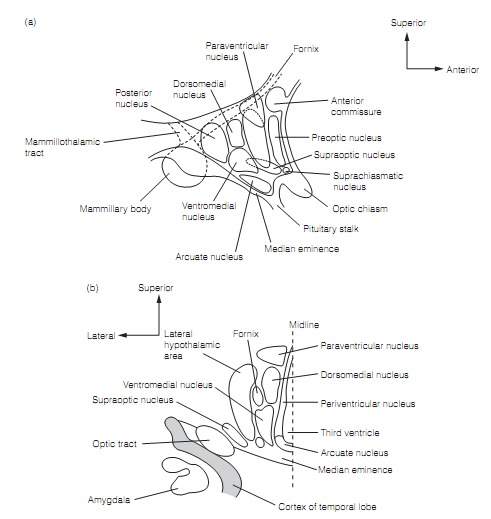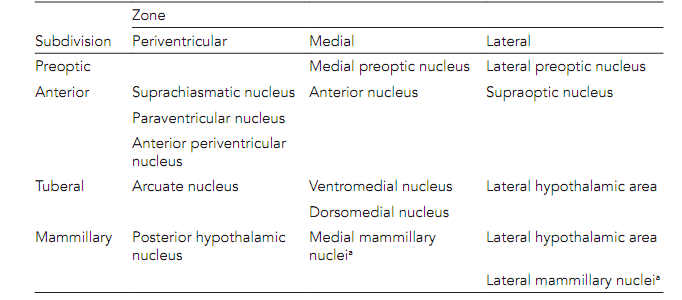Hypothalamus
The hypothalamus is included in the control of a range of functions: sleep–wakefulness, metabolic energy expenditure, thermoregulation, feeding, drinking and fluid homeostasis, reproduction and growth. Much of this is completed by hypothalamic regulation of the autonomic nervous system and the pituitary gland.
The hypothalamus consists of many nuclei clustered about the third ventricle as shown in figure below. At its anterior end the floor of the ventricle thickens to become the median eminence that plans as the infundibulum (section of the pituitary stalk) to the posterior pituitary gland. The hypothalamus is splitted into three longitudinal zones—the innermost of which, the periventricular zone, enclosed the third ventricle—and four sub-divisions along its rostro-caudal axis as shown in table below.

Figure: Human hypothalamus of the left cerebral hemisphere showed diagrammatically: (a) midsagittal part; (b) coronal part

Table: Position of some hypothalamic nuclei